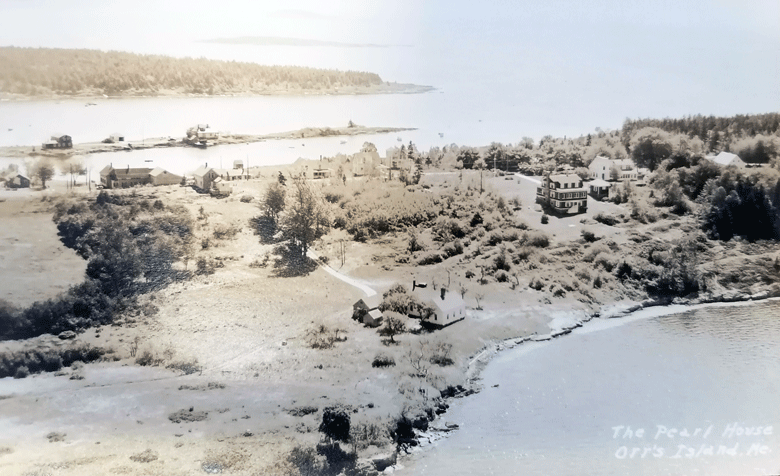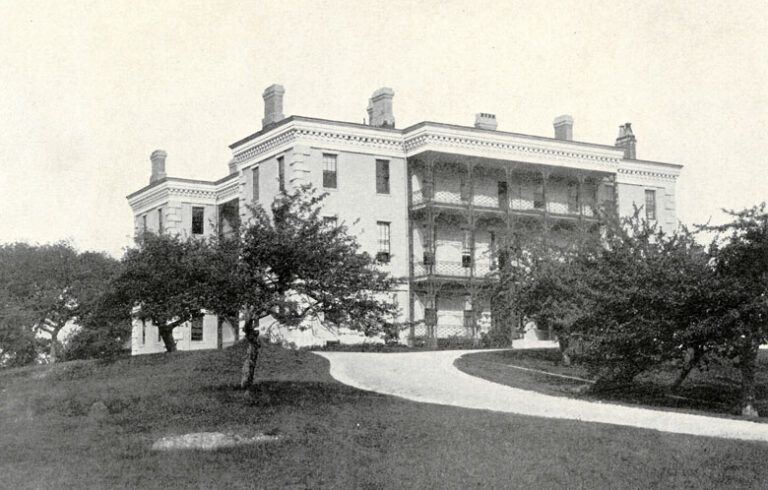Harriet Beecher Stowe is renowned for her influential 1852 novel, Uncle Tom’s Cabin, which played a pivotal role in shaping national perspectives on slavery. During her husband’s tenure as a professor at Bowdoin College, Stowe penned this significant work while residing in Brunswick. Her impact on the historical fabric of Brunswick is evident, as her Federal Street residence stands as a cherished historic site, and one of Brunswick’s elementary schools bears her name.
But she also had a major but lesser-known impact on a community not so far away—Orr’s Island.
Orr’s Island, apart from its captivating coastal village scenery, has gained recognition for its lobster boat fleet and the distinctive crib-stone bridge connecting it to Bailey Island. In 1862, Stowe chose Orr’s Island as the backdrop for her novel, a captivating coming-of-age tale that weaves together elements of romance, tragedy, and misadventure.
Orr’s Island experienced an influx of tourists seeking an authentic Stowe-inspired experience.
Through this literary work, Stowe provided readers with an intimate glimpse into the daily lives, customs, and work routines of a real Maine community. Thus, Orr’s Island became inextricably linked to a national literary figure and her transformative writing.
Enthusiastic fans of Stowe’s novel flocked to Orr’s Island, eager to explore the sites and encounter the people who inspired her. Initially, the local community was ill-prepared to accommodate these visitors, lacking lodging and dining establishments, and facing transportation challenges.
However, with the establishment of steamer lines and the growing popularity of tourism in Maine during the 1880s and 1890s, Orr’s Island experienced an influx of tourists seeking an authentic Stowe-inspired experience, the peak of which occurred after her death in 1896.
Over time, the locals gradually began to capitalize on the interest of tourists. Despite the fact that no actual homes perfectly matched Stowe’s descriptions, several houses were controversially identified as the residences of central characters.
Orr’s Island evolved into a Pearl-themed attraction, offering visitors a comprehensive experience that included visits to three character’s houses, the site of a smuggler’s cave, a cemetery, reenactors, day sails, clambakes, hotels, and a general store with an extensive souvenir section.
Additionally, old salts spun their yarns including numerous stories circulated about Stowe’s time on the island. Consequently, tourism had supplanted seafaring as the island’s primary industry.
The aerial-view postcard shown here, dating back to the 1930s, represents just one of the hundreds of promotional materials found in Maine Maritime Museum’s collection, all aimed at enticing tourists to explore “the Pearl’s” Orr’s Island. Spanning several decades, these postcards likely ceased production in the late 1940s, around the same time when the last accessible house was closed to the public.
Remarkably, this particular house still stands today as a private residence. During Stowe’s era, it served as the home of Deacon Johnson, the one individual widely believed to have inspired a character in the book.
Kelly Page is collections and library services manager at Maine Maritime Museum in Bath. Current exhibits include “Women Behind the Lens” and “SeaChange: Darkness and Light in the Gulf of Maine.” Plan your visit at www.mainemaritimemuseum.org.





